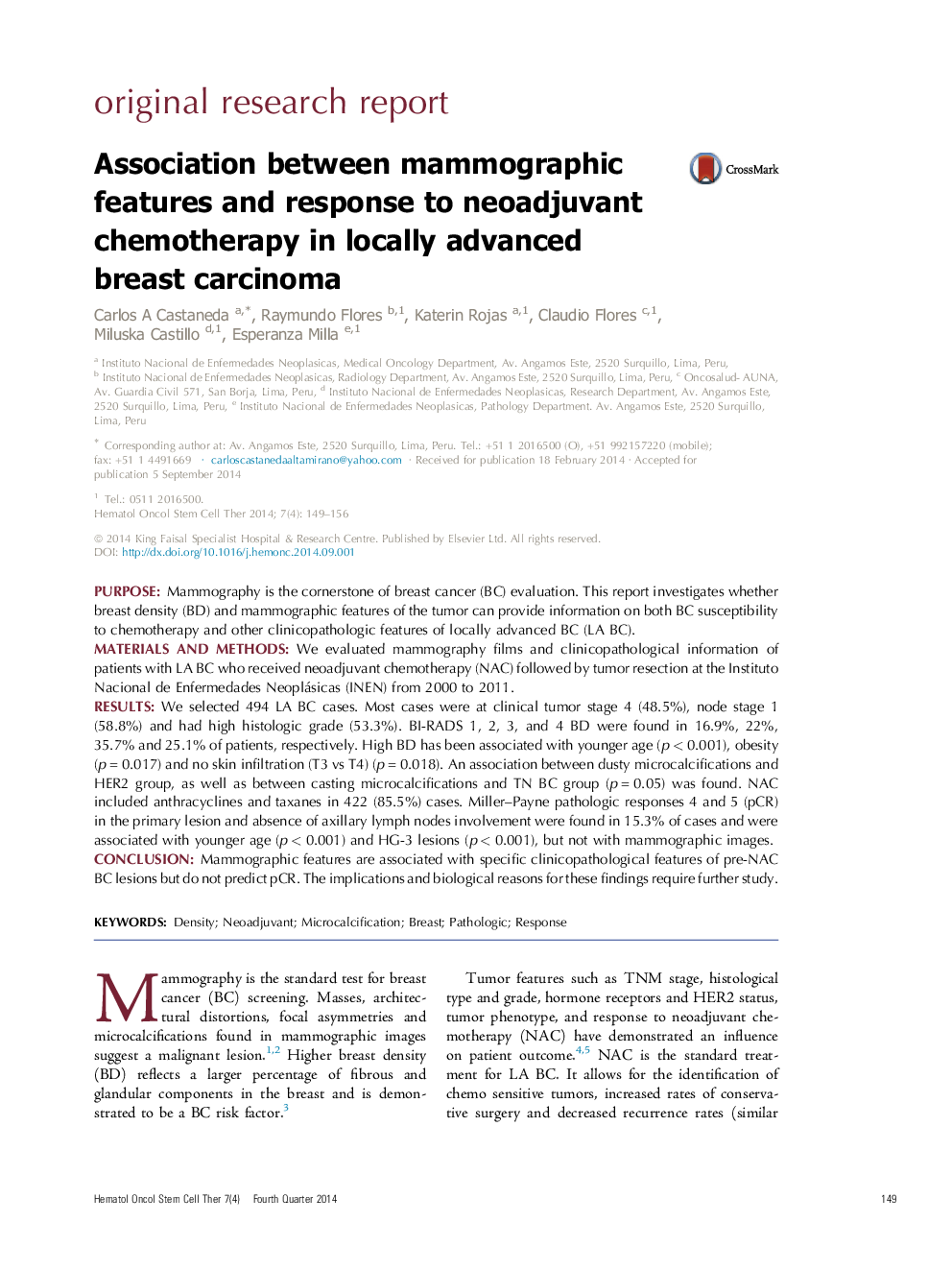| Article ID | Journal | Published Year | Pages | File Type |
|---|---|---|---|---|
| 2135702 | Hematology/Oncology and Stem Cell Therapy | 2014 | 8 Pages |
PurposeMammography is the cornerstone of breast cancer (BC) evaluation. This report investigates whether breast density (BD) and mammographic features of the tumor can provide information on both BC susceptibility to chemotherapy and other clinicopathologic features of locally advanced BC (LA BC).Materials and methodsWe evaluated mammography films and clinicopathological information of patients with LA BC who received neoadjuvant chemotherapy (NAC) followed by tumor resection at the Instituto Nacional de Enfermedades Neoplásicas (INEN) from 2000 to 2011.ResultsWe selected 494 LA BC cases. Most cases were at clinical tumor stage 4 (48.5%), node stage 1 (58.8%) and had high histologic grade (53.3%). BI-RADS 1, 2, 3, and 4 BD were found in 16.9%, 22%, 35.7% and 25.1% of patients, respectively. High BD has been associated with younger age (p < 0.001), obesity (p = 0.017) and no skin infiltration (T3 vs T4) (p = 0.018). An association between dusty microcalcifications and HER2 group, as well as between casting microcalcifications and TN BC group (p = 0.05) was found. NAC included anthracyclines and taxanes in 422 (85.5%) cases. Miller–Payne pathologic responses 4 and 5 (pCR) in the primary lesion and absence of axillary lymph nodes involvement were found in 15.3% of cases and were associated with younger age (p < 0.001) and HG-3 lesions (p < 0.001), but not with mammographic images.ConclusionMammographic features are associated with specific clinicopathological features of pre-NAC BC lesions but do not predict pCR. The implications and biological reasons for these findings require further study.
